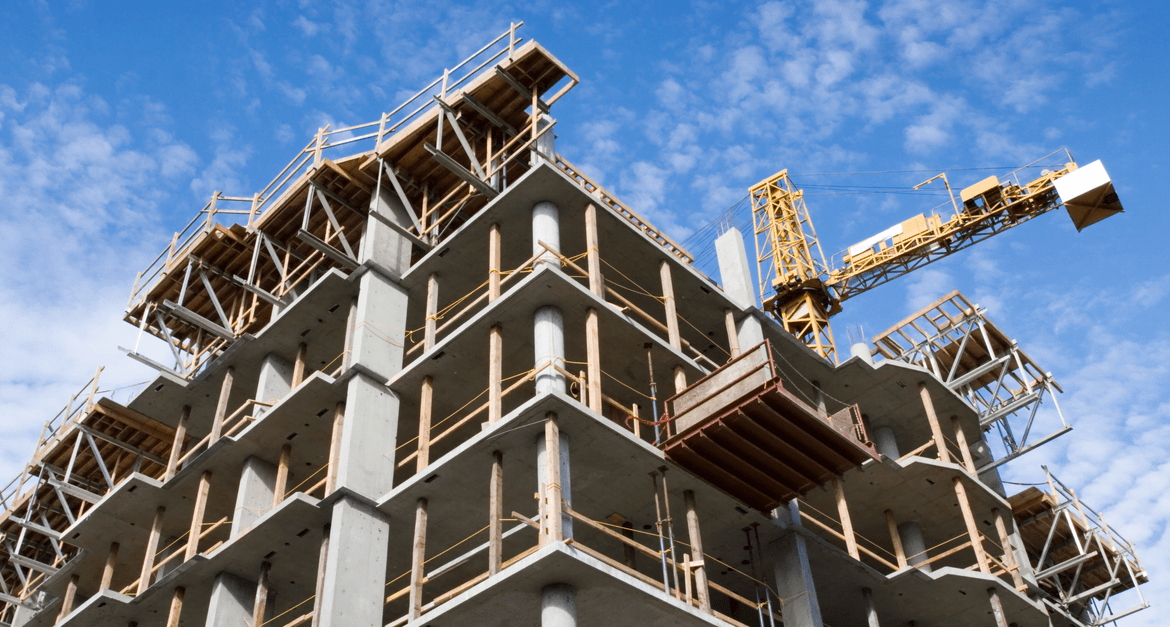
Introduction
High-rise construction in Nigeria represents a significant shift towards urbanization and modernization. Skyscrapers and multi-story buildings are transforming the skyline of cities like Lagos, Abuja, and Port Harcourt, reflecting economic growth and a burgeoning demand for space. However, the pursuit of vertical expansion brings with it a set of unique challenges that must be meticulously addressed to ensure the safety, sustainability, and success of high-rise projects. This article explores the key challenges of high-rise construction in Nigeria and offers strategies for overcoming them.
The Rise of High-Rise Construction in Nigeria
High-rise buildings are increasingly seen as a solution to the challenges of rapid urbanization and limited land availability in Nigeria. These structures offer several benefits:
- Optimized Land Use: High-rises maximize the use of limited land, providing more floor space within a confined footprint.
- Economic Growth: They contribute to the economic development of urban areas by accommodating commercial, residential, and mixed-use spaces.
- Urban Aesthetics: Skyscrapers and high-rises enhance the skyline, contributing to the visual appeal and modern image of cities.
Key Challenges in High-Rise Construction
1. Regulatory and Compliance Issues
- Challenge: Navigating Nigeria’s complex regulatory environment can be daunting. High-rise projects must comply with a range of building codes, zoning laws, and environmental regulations, which can vary between states and local jurisdictions.
- Strategy: Engage with local authorities and legal experts early in the planning process to understand and comply with all relevant regulations. Obtain necessary permits and approvals before commencing construction, and ensure continuous compliance throughout the project lifecycle.
2. Structural and Engineering Complexities
- Challenge: High-rise buildings face unique structural challenges, including wind loads, seismic activity, and foundation requirements. Designing and constructing a building that can withstand these forces while ensuring safety and stability is a complex task.
- Strategy: Utilize advanced engineering and architectural practices to address structural challenges. Employ experienced engineers and architects who specialize in high-rise construction, and incorporate modern technologies such as Building Information Modeling (BIM) to enhance design accuracy and efficiency.
3. Environmental and Sustainability Concerns
- Challenge: High-rise buildings have significant environmental impacts, including energy consumption, carbon emissions, and resource use. Ensuring that these structures are sustainable and environmentally friendly is crucial.
- Strategy: Implement green building practices and sustainable design principles. Utilize energy-efficient systems, incorporate renewable energy sources, and prioritize sustainable materials. Conduct Environmental Impact Assessments (EIAs) to evaluate and mitigate the environmental impact of the project.
4. Construction and Project Management Issues
- Challenge: Managing the construction of high-rise buildings involves coordinating numerous contractors, suppliers, and stakeholders. Delays, cost overruns, and logistical challenges can arise, impacting project timelines and budgets.
- Strategy: Develop a comprehensive project management plan that includes detailed schedules, budgets, and risk management strategies. Employ experienced project managers and utilize project management software to monitor progress and address issues proactively.
5. Safety and Risk Management
- Challenge: The safety of construction workers and future occupants is paramount. High-rise construction involves significant risks, including falls, equipment accidents, and structural failures.
- Strategy: Implement stringent safety protocols and provide regular training for construction workers. Conduct thorough risk assessments and establish emergency response plans. Ensure that all safety standards and regulations are adhered to throughout the construction process.
6. Infrastructure and Connectivity
- Challenge: High-rise buildings require robust infrastructure, including transportation, utilities, and communication systems. Integrating these systems into the urban fabric can be challenging, particularly in areas with existing congestion and limited resources.
- Strategy: Plan for infrastructure integration early in the design process. Coordinate with local authorities and utility providers to ensure that necessary services are available and capable of supporting the high-rise building. Consider the impact of the project on existing infrastructure and develop strategies to address potential disruptions.
Best Practices for Successful High-Rise Construction
1. Early and Comprehensive Planning
- Strategic Planning: Begin with a comprehensive planning phase that includes feasibility studies, regulatory research, and stakeholder consultations. Develop a detailed project plan that outlines objectives, timelines, budgets, and risk management strategies.
- Stakeholder Engagement: Engage with stakeholders, including local communities, government authorities, and potential occupants, to gather input and address concerns. Effective communication helps build support and ensures that the project aligns with local needs and expectations.
2. Advanced Engineering and Design Techniques
- Innovative Design: Incorporate innovative design techniques and technologies to address the unique challenges of high-rise construction. Utilize BIM, advanced structural analysis, and energy modeling to enhance design accuracy and performance.
- Sustainability Integration: Prioritize sustainability by integrating green building practices and energy-efficient technologies into the design. Aim for certifications such as LEED or BREEAM to demonstrate commitment to environmental stewardship.
3. Robust Project Management and Oversight
- Project Management Tools: Utilize project management tools and software to track progress, manage resources, and communicate with stakeholders. Regularly review project performance and adjust plans as needed to stay on track.
- Quality Control: Implement rigorous quality control measures to ensure that construction meets design specifications and safety standards. Conduct regular inspections and testing to identify and address potential issues early.
4. Effective Risk Management
- Risk Assessment: Conduct thorough risk assessments to identify potential challenges and develop strategies to mitigate them. Regularly update risk management plans based on new information and project developments.
- Safety Measures: Prioritize safety by implementing robust safety protocols and providing ongoing training for construction workers. Regularly review and update safety procedures to address emerging risks.
5. Community and Environmental Considerations
- Community Engagement: Engage with local communities to address concerns and incorporate feedback into the project. Consider the impact of the high-rise building on local neighborhoods and develop strategies to mitigate any adverse effects.
- Environmental Stewardship: Implement measures to minimize the environmental impact of the project, including waste reduction, resource conservation, and pollution control. Conduct regular environmental audits to ensure compliance with regulations and sustainability goals.
Case Studies: Successful High-Rise Projects in Nigeria
Examining successful high-rise projects provides valuable insights into effective management and innovative solutions:
1. The Eko Tower Complex, Lagos
- Overview: The Eko Tower Complex is a prominent high-rise development in Lagos, featuring commercial, residential, and recreational spaces. The project showcases modern design and sustainable building practices.
- Outcome: The Eko Tower Complex has successfully navigated regulatory and construction challenges, contributing to the revitalization of Lagos’s urban landscape. The project highlights the benefits of integrating sustainability and advanced engineering techniques.
2. The Abuja Central Business District Towers
- Overview: The Abuja Central Business District Towers are a series of high-rise buildings in Nigeria’s capital city, offering office spaces, retail outlets, and residential units. The project emphasizes modern infrastructure and urban connectivity.
- Outcome: The towers have set a benchmark for high-rise development in Abuja, demonstrating effective management of infrastructure integration and project coordination. The project underscores the importance of aligning design with urban planning objectives.
Conclusion
Addressing the challenges of high-rise construction in Nigeria requires a multifaceted approach that encompasses regulatory compliance, structural engineering, sustainability, project management, and safety. By understanding and proactively managing these challenges, developers, architects, and stakeholders can successfully navigate the complexities of high-rise projects and contribute to the growth and modernization of Nigerian cities.
Investing in advanced engineering techniques, robust project management practices, and sustainable design principles will enhance the resilience and success of high-rise construction projects. As Nigeria continues to evolve and expand its urban infrastructure, effective management of high-rise projects will play a crucial role in shaping the future of its cities and ensuring their continued development and prosperity.
By addressing these challenges comprehensively and embracing innovative solutions, Nigeria can harness the potential of high-rise construction to build vibrant, sustainable, and resilient urban environments for the future.
Contact Us
For premier Understanding of the High Rise Construction Law, contact Chaman Law Firm today. Our offices are conveniently located in Lagos, FCT Abuja, Ogun State, and the UK. We are readily available to assist you with your legal needs. Whether you require consultation, representation, or ongoing legal support, Chaman Law Firm is your trusted partner in navigating Construction law in Nigeria.
Call us at 08065553671 or email us at info@chamanlawfirm.com to schedule a consultation.
- Construction Law
- Real Estate Law
- Building and Safety Codes
- Environmental Law
- Insurance Law
- Health and Safety Law
- Contractor and Subcontractor Law
Chaman Law Firm: Your Trusted Legal Partner in Construction Law
By choosing Chaman Law Firm, you are selecting a team of dedicated professionals committed to providing exceptional legal services tailored to your unique needs. Let us be your advocate and guide in the complex world of Construction law, ensuring your interests are protected and your goals are achieved.

